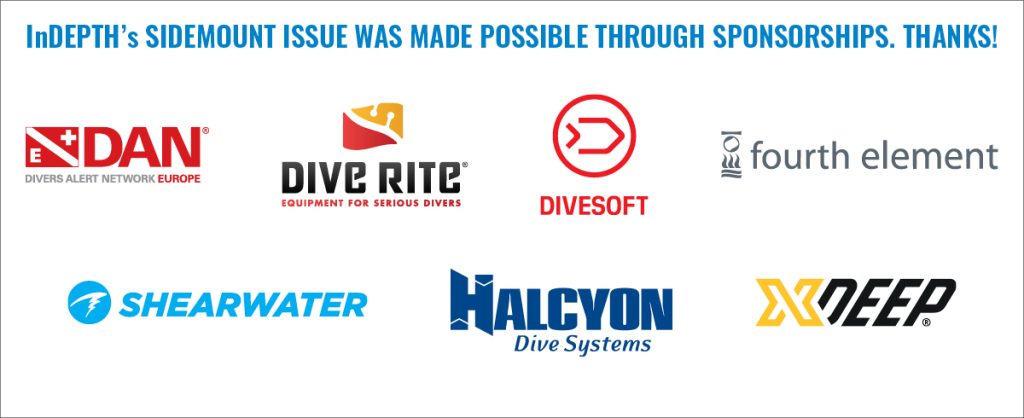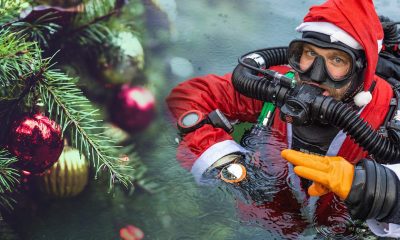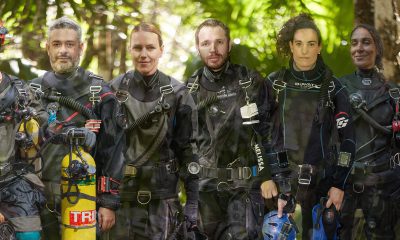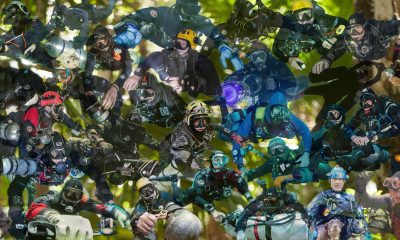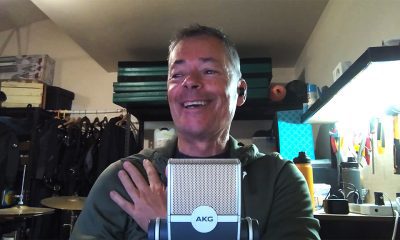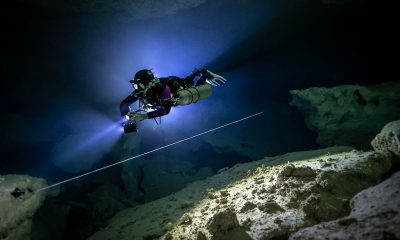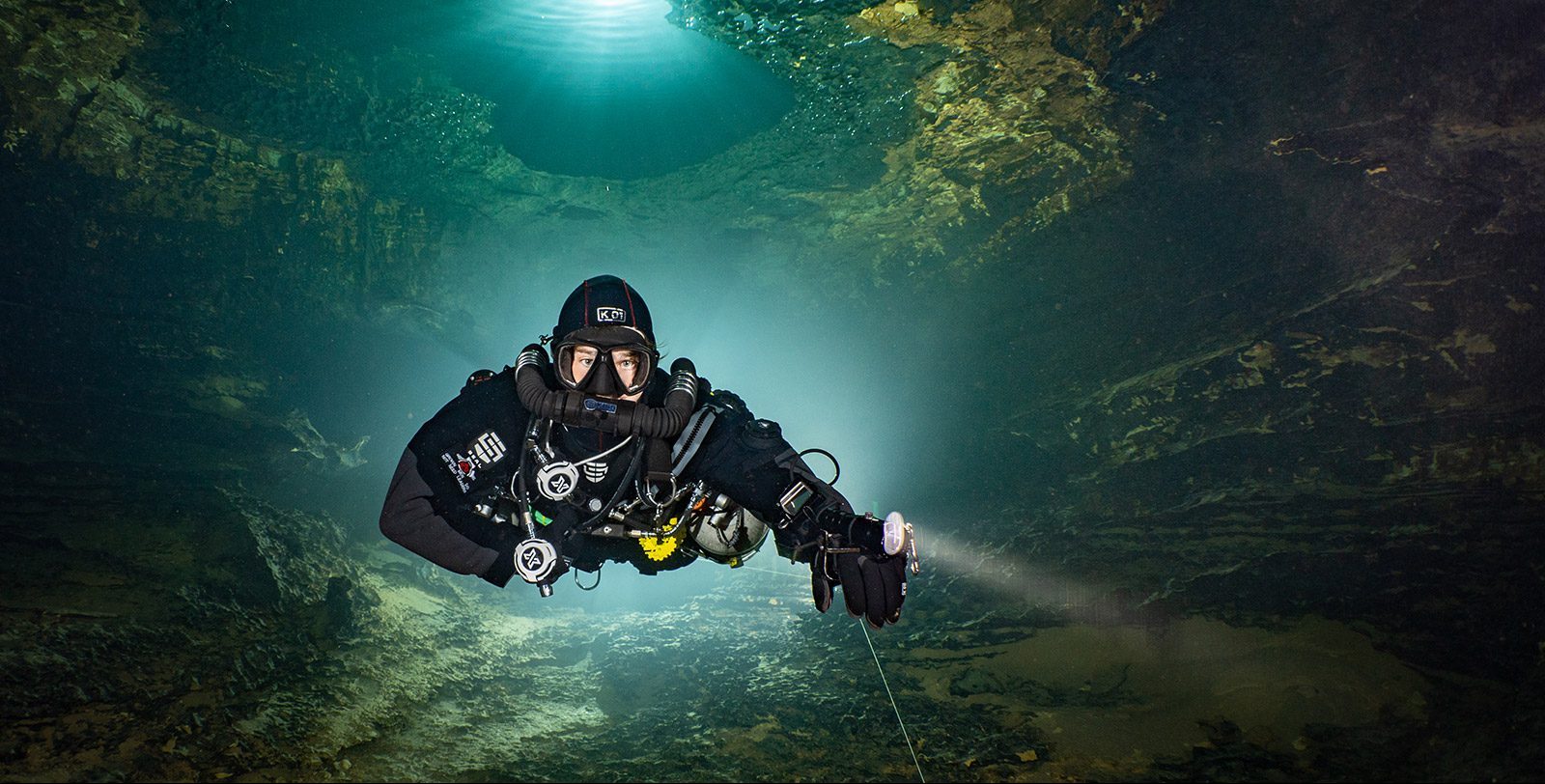
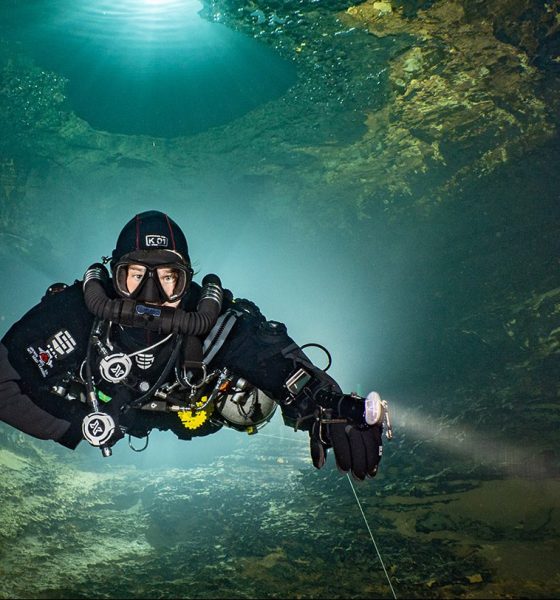
Featured
The What, Which, and Why of Sidemount
Passionate Greek-Italian photographer/filmmaker, author, and cave and sidemount instructor Stratis Kas reviews the nuts and bolts, err the what, which and why of sidemount diving. In fact, everything you need to start your journey. Is there a sidemount rig in your future?
By Stratis Kas. Images courtesy of Stratis Kas. Header image:Tru Madame, France. Photo by Matt Brooker
If backmount diving is like space travel (equipment consistency, practicality, and universal acceptance as a gold standard without a legitimate reason), then sidemount must be like surfing (emphasis on individualism, competitiveness, self-proclaimed coolness and, of course, belonging to a “tribe” of few).
Now, everyone knows that I’m not very objective. I love sidemount to the point that if I cannot dive sidemount, I would often rather not dive at all. After years of pushing the limits with complex technical backmount dives, my first encounter with sidemount ignited a fire within me, reminiscent of that first exhilarating discovery dive. It was as if the underwater realm had unveiled a secret doorway, and all I had to do was step through with a permanent smile on my face, holding my regulator tight, knowing that a world of endless possibilities awaited.
But, in all seriousness, sidemount is just another diving configuration with (as any other) many pros and some cons. Even if sidemount was born out of logistical challenges related to equipment transportation in British dry caves, it has permeated nearly all diving situations today.
Nevertheless, sidemount is more complicated to get right than backmount, mostly due to the high personalization that is required to achieve its most important benchmark: a perfect trim. If you are new to sidemount, your journey may be a bit bumpy. But if you are already a devoted sidemount tribe member, you know that the journey truly never ends. Sidemount is organic—it keeps evolving.
Just a Configuration?
Sidemount offers numerous advantages. It simplifies passing through cave restrictions (or, in some cases, makes passage possible), potentially improves trim, offers much faster and easier access to cylinder valves, provides true gas redundancy (divers have two completely independent sources of gas without the possibility of manifold failure), and allows simple tank removal and exchange with other divers if needed.
For these reasons—and because of a huge social media explosion— sidemount is now a widespread trend no longer limited to cave diving applications. More and more divers have realized that even if, initially, it is more complicated to perfect than the “one size fits all” backmount configuration, sidemount can provide a lot of advantages to any diver (including recreational divers) once perfected.
This trend did not go unnoticed. Almost all scuba certification agencies have developed sidemount training programs (both one- and two-cylinder recreational courses and two-plus cylinder technical courses) and incorporated the configuration as an equipment option in their existing technical diving programs. This increased interest in sidemount also prompted several manufacturers—and some talented individuals—to create and sell their own designs, which only helped this very active and passionate community grow at all levels.
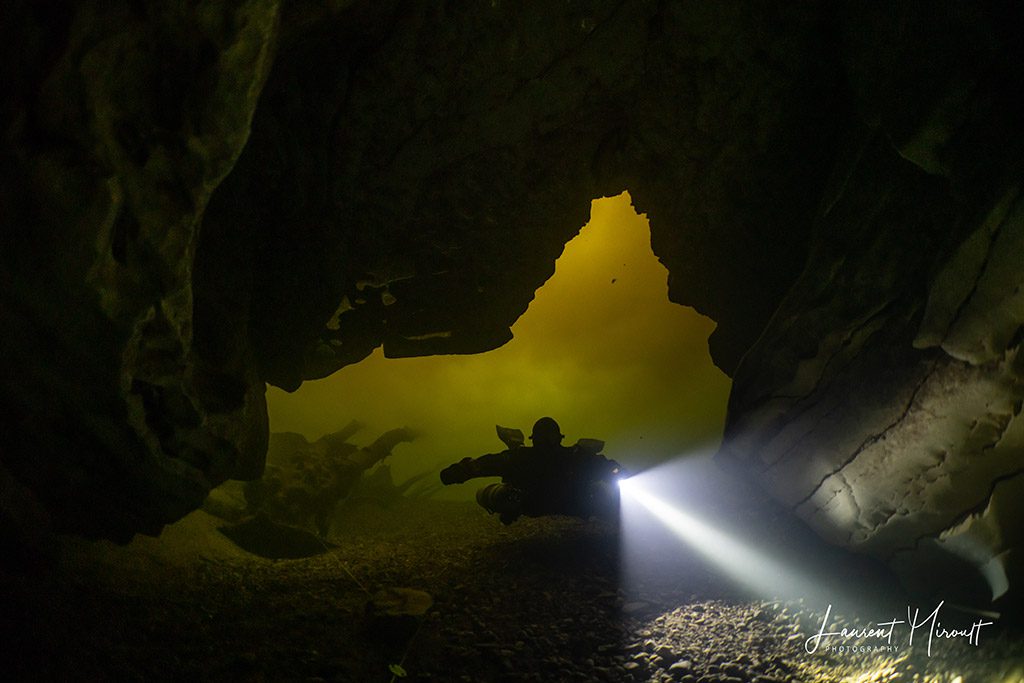
Sidemount—when done properly—is generally much more trimmed than a backmount configuration.
However, sidemount requires special attention and precision, and rigging this equipment properly takes time and commitment. It is far more personalized, and even a 2 cm longer (or shorter) connection, for example, can dramatically change how the diver will feel. Things that can pass as more or less universal in a backmount configuration will be more noticeable and impactful in sidemount. Nevertheless, once properly configured, it becomes perfectly tailored to each individual diver. Everything feels right and makes sense. Most practitioners develop their own adaptations of established standards and share them openly online; accessible information has facilitated the vital, organic growth of sidemount configuration. Also, since divers are generally willing to share stories about their configuration experiments, equipment companies receive valuable feedback from divers which they can implement into their own product development.
Of course—as in any other niche design conversation, diving-related or not—each system has its super-fans and biggest critics. This, coupled with the rise of social media in the diving industry, brought a lot of ugliness as disagreements and preferences became downright offensive arguments, most of the time without a reason. What started as a community of innovating explorers, pioneers, improvised designers, and inventors turned suddenly sour. Looking optimistically at the future of diving (and sidemount in particular), this is a trend I cannot wait to see die off.
What Is (And What Isn’t) Sidemount Diving?
Let’s break down what makes sidemount distinctive from other configurations.
a) Sidemount Diving
In a sidemount configuration, divers secure two (or more) primary cylinders at the sides of their bodies instead of on their backs. Bungees loop (either in one single piece or more) over the cylinder valve to keep it tucked and close to the diver’s armpit. The bungee is routed from behind the diver’s back. The lower part of the cylinders is secured to the diver’s harness near the waist or hips with bolt snaps.
The use of bungee ensures customization and very snug fit without the rigidity of a fixed rope connection. Bungees must be replaced with time as they lose their initial elasticity.
b) Mounting stage cylinders on the side of a diver using sidemount configuration
For divers using backmounted doubles or CCR, a sidemount-esque stage or decompression cylinder storage method is gaining popularity: mounting stages/deco bottles on the side of a diver using bungee loops and/or butt-plate rails (instead of back-mounting them) to achieve a more streamlined profile. But, this method should not be confused with sidemount diving.
c) No-mount diving
No-mount diving is a highly advanced and specialized overhead environment option divers use to pass through extreme restrictions. Divers remove all items of their configuration that stop them from passing through the restriction (like helmets and wings), hold their cylinders in front of them, and pass carefully through the restriction. Divers should consider that their buoyancy will change once they remove their gear or place cylinders in front of them.
d) “Monkey diving”
“Monkey diving” configurations adhere to traditional procedures and equipment layout for sidemount but only use a single cylinder. It is a popular option for recreational sidemount courses (dependent on the certification agency) but should never be considered as a safe option for any overhead environment (cave/wreck/mine) penetration.
The use of a single cylinder makes some divers feel that they require a small counter-weighting to prevent lateral instability in the water, but with practice—and when using exclusively aluminum cylinders—this is not necessary. Compared to recreational single cylinder diving, monkey diving offers much easier access to the cylinder valve in a shut-down, gas-sharing scenario. Like any single cylinder configuration, it is not recommended in diving deeper than 30 m/100 ft.
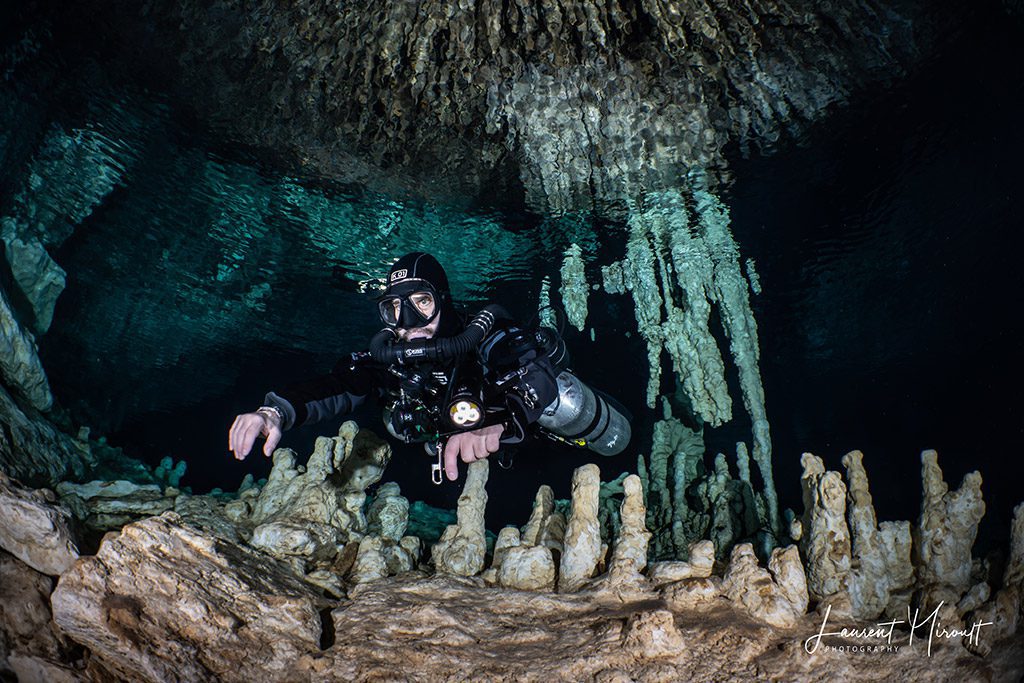
Schools Of Equipment Design
Since the days of homemade sidemount configurations, “official” systems have appeared on the market, and these are still evolving. Eventually, manufacturers had to choose their market and consider applications to create either specialized or hybrid style equipment. In addition, water temperature varies around the world and in specific dive environments. Temperature determines exposure protection, a critical consideration for weighting.
The main schools of design that emerged from these needs are:
a) Mexican style
Minimalistic and lightweight, Mexican style sidemount configurations mostly use aluminum cylinders. This style was popularized by warm-water divers and is often seen in Mexico. The Mexican style is an evolution of the original pioneers’ configurations that used lightweight (often non-diving originated) buoyancy bladders with basic harnesses for cylinder and weight attachments.
Characteristics:
- Harness: Minimalistic webbing harness, using separate shoulder and lumbar plates
- Lower cylinder attachment: D-rings on the side and rear waist-belt, often with sliding D-rings for trim adjustment
- Upper cylinder attachment: Continuous or loop bungee
- Wing shape: Triangle, diamond or box shaped bladders offer a lift focused over the hips
- Example rigs: Razor, XDeep Stealth, UTD Z-Trim, Hollis Katana 2, Apeks WSX
- Influential divers that used this style: Steve Bogaerts, Steve Martin
b) Florida style
A much larger and more robust rig, Florida style is almost always employed with steel cylinders. Popular between colder-water divers, this style is often seen in Florida. This style is an evolution of home-converted BCDs/wing systems from backmount configurations. Almost all hybrid-style products are Florida style because of their evolution from classic backmount applications.
Characteristics:
- Harness: Almost always the harness is fixed to the BCD, sometimes with quick-release buckles and adjustments
- Lower cylinder attachment: Butt-plate with steel robust rails to support heavy steel cylinders
- Wing shape: Donut or horseshoe bladders offer evenly-distributed lift
- Example rigs: DiveRite Nomad Ray, Halcyon Contour, Hollis SMS100, Hollis SMS75, Armadillo
- Influential divers that used this style: Lamar Hires, Woody Jasper, Wes Skiles, and Edd Sorenson
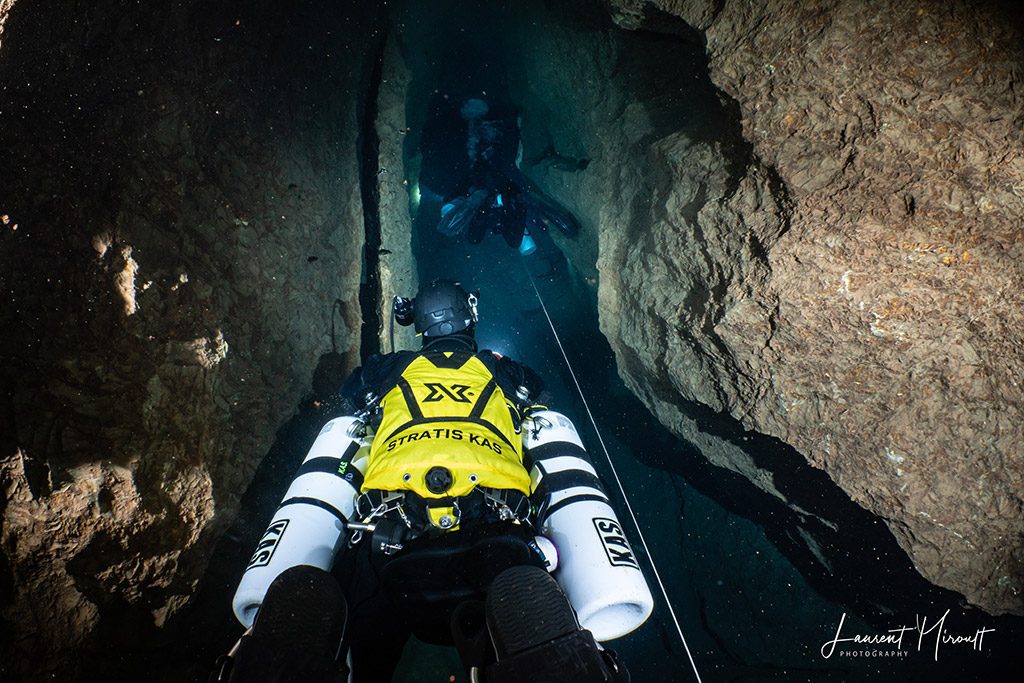
Why should I consider Sidemount?
Sidemount divers have much easier visual and manual access to their regulator first-stages and cylinder valves than backmount divers.
During a shut-down procedure, this improved accessibility can decrease response time. Since they can easily see their equipment, divers can more quickly identify the root cause of a gas loss and either attempt to fix the problem or switch to a backup gas source. They can also easily reach the cylinder valve if they decide to “feather” it—which could significantly reduce their gas loss—or attempt to breathe directly from the tank valve.
A sidemount configuration can also reduce entanglement risks and prevent valves or regulators from impacting cave/wreck restrictions, walls, or ceilings.
In both backmount and sidemount configurations, all technical divers must have a redundant, backup gas supply system (e.g., an isolation manifold or independent cylinders).
Catastrophic O-ring failures (though extremely rare) could lead to total gas loss.
Having access to two equal, isolated cylinders in sidemount means that divers can maintain a backup gas reserve even if they completely lose one cylinder. Cylinder exchanges in gas-sharing emergencies are also significantly easier in sidemount, especially when using aluminum cylinders.
Since their cylinders are positioned under their armpits and in line with their bodies, sidemount divers can easily pass through small restrictions—significantly more easily than they could in backmount.
And, since complete equipment removal is simpler in this configuration, sidemount divers are only limited by the sizes of their bodies and wet/dry suits.
Since sidemount divers can transport one cylinder at a time and manipulate (attach, remove, or replace) cylinders while in the water, they don’t have to carry cumbersome manifold twin sets.
If divers must transport equipment to the dive site, single cylinders are much easier to carry, and sidemount harnesses are typically lighter than backmount harnesses. Plus, improved trim (due to a lower profile configuration) can reduce drag.
Sidemount cylinders are often more readily available than their counterparts.
Unlike manifold twin sets for backmount configurations, cylinders for sidemount are usually easy to find for rent, reducing some sourcing difficulties.
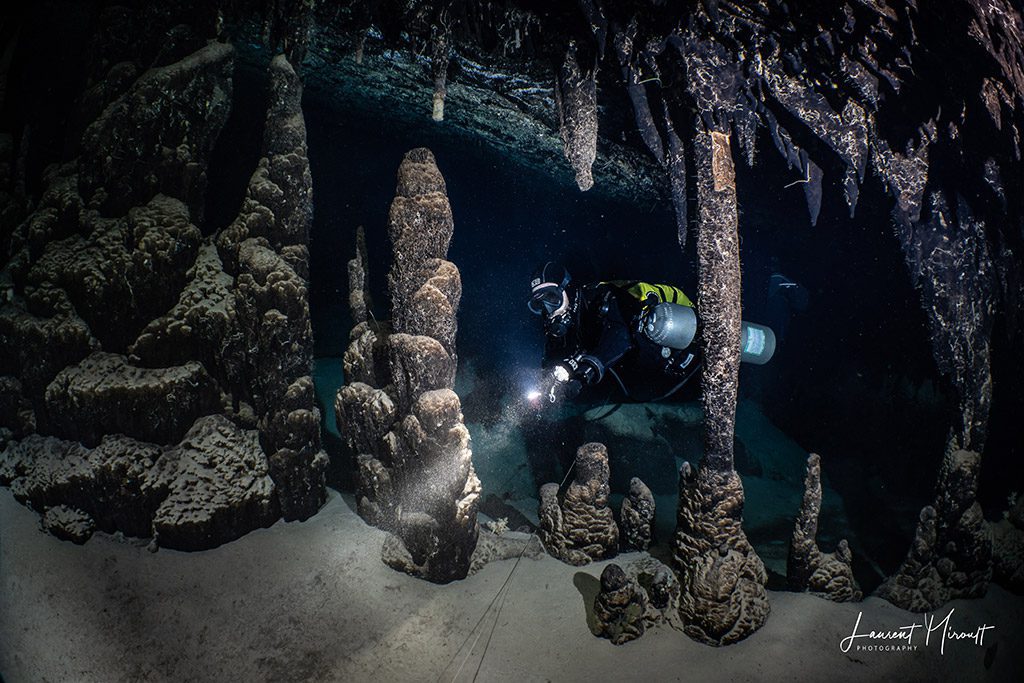
Gas Management
Technical and overhead environment divers generally use the rule of thirds as their least conservative option when diving, and sidemount is no exception. But with sidemount, even cylinder consumption control during the dive is very important, considering that gas-sharing or even donating a cylinder is a possibility.
The idea is to periodically switch primary breathing cylinders so that, at any moment, both cylinders retain a sufficient reserve of gas for both divers to reach the exit—or the next available stage—safely from any point during the dive. There are a few different schools of thought when it comes to this procedure; a good average is to make sure the difference between the two cylinders never exceeds 20 to 30 bar/290 to 435 psi (and, of course, to make sure not to breathe from any cylinder below turn pressure).
Apart from gas management, making sure that both primary cylinders have similar gas levels also helps preserve stability and lateral trim by maintaining equal buoyancy on either side of the body. Occasional regulator switching also helps to confirm that both left and right regulators remain fully functional. Divers in overhead environments often check this prior to passing through restrictions and high silt areas.
Regulator Switching Procedures
a) Incremental
This is the primary regulator switching procedure taught to sidemount divers. It involves switching between the left and right side regulators at predetermined increments of pressure. The smaller the increment, the closer the match of pressure between their primary cylinders. The most commonly used increment is 30 bar/435 psi.
b) The Rule of 1/6
A less common method of maintaining cylinder balance is to swap regulators for every 1/6 of cylinder gas consumption. This means that—when using the rule of thirds—divers will use each regulator twice before reaching turn pressure (2/3) and switch two more times on each regulator until they reach their safety reserve (1/3).
As I look into the future, my heart fills with anticipation for the growth of sidemount diving. For it is through this collective spirit, this unwavering devotion, that sidemount will continue to evolve. We are the vanguards of a movement, the guardians of innovation. Let our voices echo through the depths, shaping a legacy that will inspire generations to come. The time has come to shed our limitations, to dive headfirst into the extraordinary. Together, let us embark on a journey where the boundaries of possibility are shattered, and the dramatic beauty of sidemount unfolds before us, revealing the underwater world in all its majestic glory.
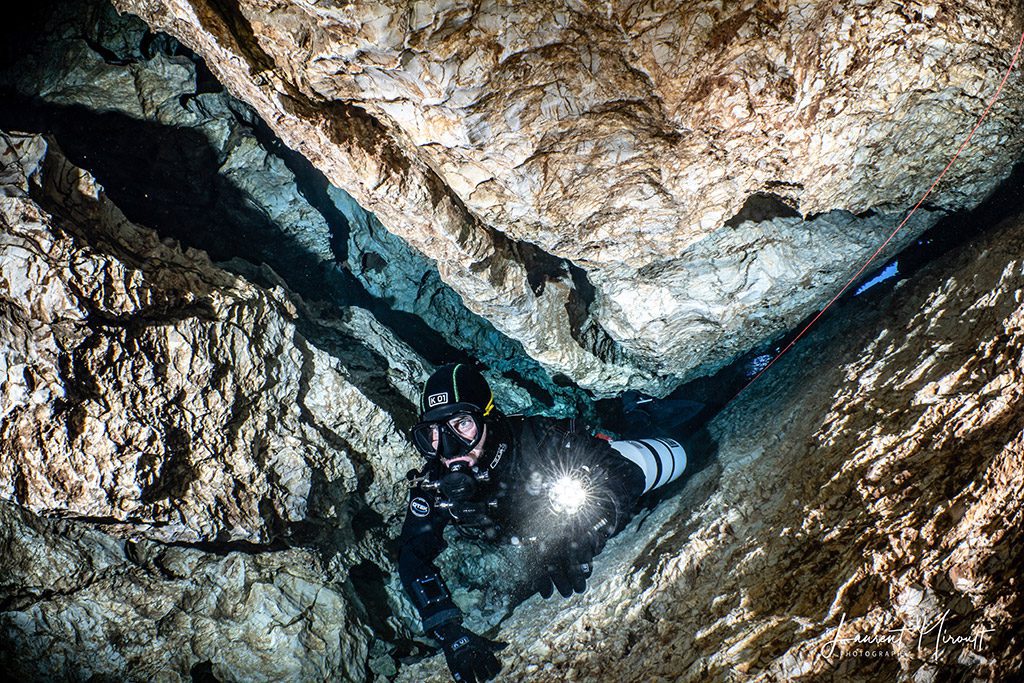
Please Take a Minute And Complete our New: Sidemount Diving Survey. We will report the results in a coming issue.
DIVE DEEPER
Divernet: Liddiard, John (June 2012). “Stage or Sidemount – What’s the Difference?”
Advanced Diver Magazine: “CCR Sidemount – Stage Configuration for Exploration”
Cave Diving Group (CDG): Ryall, Dave. “Cave Diving British Style”. Sidemount Diving Techniques. Cave Diving Group (CDG).
Advanced Diver Magazine: Armadillo Sidemount Harness
Sport Diver Magazine: Martin, Steve “Sidemount Diving – The Next ‘Big Thing’ in British Diving”. January 2012
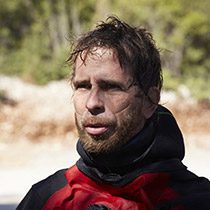
Stratis Kas, a Greek-Italian professional diving instructor, photographer, film director, and author, has spent over a decade as an esteemed Advanced Cave instructor, leading expeditions to extreme locations worldwide. His impressive diving achievements have solidified his expertise in the field. In 2020, Kas published the influential book “Close Calls,” followed by his highly acclaimed second book, “CAVE DIVING: Everything You Always Wanted to Know,” released in 2023. Accessible on stratiskas.com, this comprehensive guide has become a go-to resource for cave diving enthusiasts. Kas’s directorial ventures include the documentary “Amphitrite” (2017), shortlisted for the “Short to the Point” Film Festival, and “Infinite Liquid” (2019), which explores Greece’s uncharted cave diving destinations and was selected for presentation at Tekdive USA. Kas’s expertise has led to invitations as a speaker at prestigious conferences, including Eurotek UK, Tekdive Europe and USA, Tec Expo, and Euditek. For more information about his work and publications, visit stratiskas.com.
